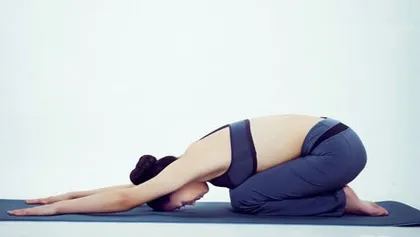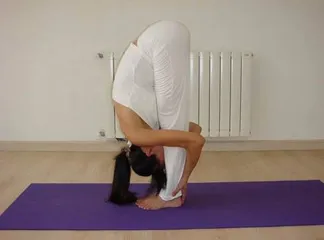11 basic movements for getting started with yoga (picture)

Notes on getting started with yoga:
1. Don't do yoga on an empty stomach
It is best to finish eating an hour or so before yoga, but if you don't have time to eat an hour before yoga but are very hungry, you can eat a banana 20 minutes before yoga, which can resist hunger without indigestion.
2. Don't be shy about your body
People who practice yoga in the advertisement are all slim, but no matter what their waist circumference is, they can practice yoga well. In fact, research shows that yoga can help people lose weight and avoid weight gain.
3. Don't have to pursue the ultimate
You may have seen yogis twist their bodies like noodles, but this is just the best practice. Even if your body is naturally stiff, your body will become flexible through practice. In addition, you should know that yoga is not just about posing, but also about adjusting your breathing and relaxing your mood.
4. No socks and gloves needed
Non-slip gloves and socks will give you the wrong feeling of where you stretch your body when practicing yoga postures. In the long run, you will be unable to accurately perform specific yoga movements and achieve the effects of yoga practice.
5. Adjust breathing
Yoga classes usually start with breathing exercises and end with slow, deep breathing. When you don't know what to do, focus on exhaling and exhaling. This is the best way to stay calm and help with yoga poses.

6. Baby style is a good partner for beginners
In yoga classes, teachers may ask people to do different levels of movements, so when some movements are really impossible, don't panic and try to do a more relaxed baby pose. You can also try doing baby pose to adjust your breathing when your breathing is not smooth.
7. Take a bath at least 15 minutes after practicing yoga.
8. When doing a handstand position with the upper body down, do not do it for patients with high blood pressure and low blood pressure, people with head injuries, patients with dizziness, and people with heart failure, and women during menstruation should not do it, to avoid head congestion and danger.
9. Don't worry about your muscles and bones being hard and unable to withstand the torture of various postures. In fact, as long as you follow the teacher's practice procedures and cooperate with the teacher's breathing and stretching skills, let nature take its course and progress slowly.
10. When practicing yoga, dress as simple and loose as possible. It is best to practice with your feet bare and remove your watch, belt or other ornaments.
11. Maintaining air circulation during practice is important for breathing.
12. The cushion should be supportive. It is not good to be too soft or too hard. Don't let your feet slip.
11 basic steps for getting started with yoga:
Posture 1: Prayer stance
Practice: Stand upright with your feet together. Put your hands together before your chest. Relax your body. Breath evenly.
Benefit: Establish a state of concentration and tranquility to prepare for the exercises to be done.

Posture 2: Spread your arms (raise your arms upward)
Practice: Raise your upper arms upward over your head, and spread your arms at shoulder width apart. Raise your head slightly back and your upper body.
Breathe: Inhale with your arms raised.
Benefit: Stretch the abdominal organs, thus eliminating excess fat and improving digestion. Work on arm and shoulder muscles. Strengthen the spinal nerves and broaden the lungs.

Posture 3: Forward-bending pose (hand-touching-foot pose)
Practice: Bend forward until your hands or fingers touch either side of your feet, or the ground in front of your feet. Use your forehead to touch your legs but do not strain it. Keep your knees straight.
Breathing: Exhale as you bend forward. Try contracting your abdomen in the final position and exhale as much as possible.
Benefits: Help eliminate or prevent stomach or abdominal diseases and reduce excess abdominal fat. Improve digestion. Helps eliminate constipation, soften the spine, and strengthen the spinal nerves.